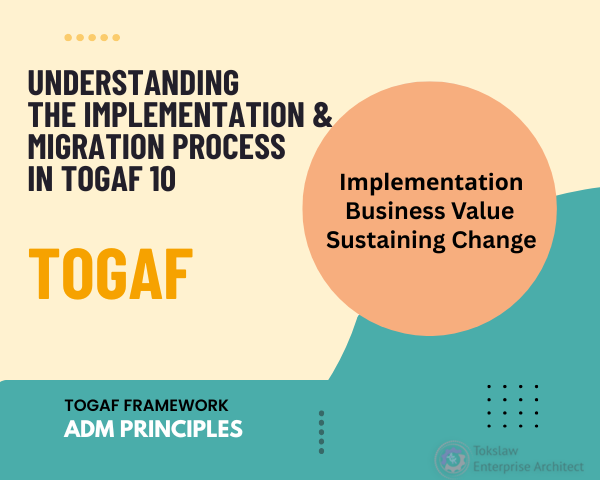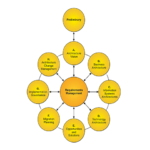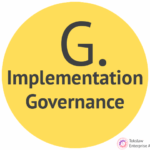In enterprise architecture, TOGAF (The Open Group Architecture Framework) provides a structured methodology to help organizations transition smoothly from their current state to a desired future state. Key phases of TOGAF 10 play a crucial role in ensuring that this transition is effective and aligned with business objectives. Let’s break down these phases for clarity.
Phase F: Developing the Implementation and Migration Plan
The first step in making pivotal changes is crafting a comprehensive migration plan. Phase F focuses on defining the specifics of transitioning to the target architecture. This involves:
- Project Timelines: Establish a clear timeline for each part of the implementation.
- Resource Allocation: Identifying what resources (human, technological, financial) will be needed and ensuring they are available.
Organizations can set a robust foundation for successful implementation by meticulously planning these elements.
Phase G: Implementation Governance
Once the plan is in place, Phase G ensures that the implementation process meets the designed specifications and architectural requirements. This phase is all about:
- Monitoring: Continuously overseeing the implementation to ensure it aligns with the originally described architecture.
- Governance: Providing the necessary oversight to manage any deviations from the plan, ensuring that the project stays on track and meets its objectives.
Phase H: Realizing Business Value
The journey doesn’t end with implementation. In Phase H, the focus shifts to monitoring the realized changes and assessing their business value. Key activities in this phase include:
- Assessment Alignment: Evaluate whether the changes align with the original architectural designs and objectives.
Deliverable Monitoring: Tracking key deliverables to ensure they add real value to the business, ultimately gauging the success of the implementation.
Requirements Management: Sustaining Change
Throughout all phases, effective requirements management is essential. This ongoing process ensures that any changes can be handled swiftly and efficiently, regardless of when they arise during architecture development. Key tasks include:
- Monitoring Architecture Requirements: Keeping a close eye on fulfilling architectural requirements to ensure they are met.
Stakeholder Engagement: Actively identifying and addressing stakeholders’ needs to ensure that their requirements are integrated into the architectural vision.
Migration Planning Activities
In TOGAF 10, the Migration Planning phase is pivotal. It typically includes two primary activities:
- Identifying Major Implementation Projects: Recognizing and prioritizing the major projects to drive migration efforts forward.
- Defining a Detailed Migration Plan: This involves creating a roadmap for how these projects will be executed, ensuring a smooth transition to the target architecture.
Conclusion
Navigating the complexities of enterprise architecture requires a disciplined approach. Organizations can achieve their strategic objectives and maximize business value by understanding and effectively executing the phases of implementation and migration—from planning to governance to monitoring. As you embark on your architecture journey, remember that each phase uniquely guides your organization toward success.




Pingback: Transitioning to Implementation – Toks Lawal